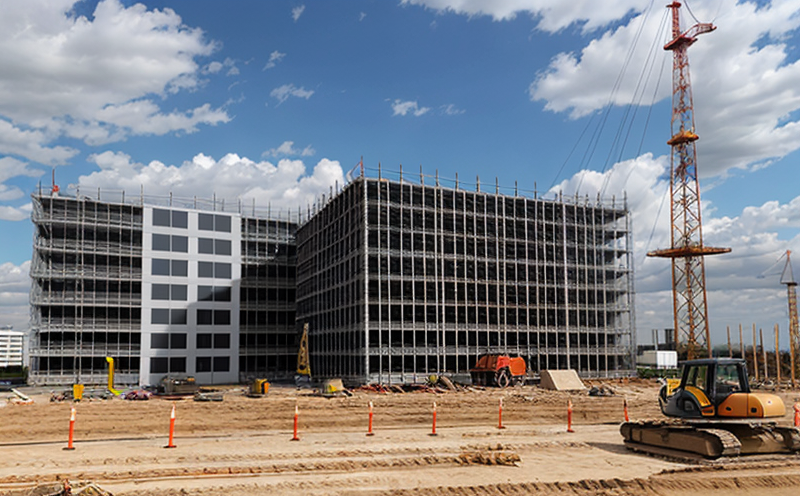Simulating high-wear conditions in construction to assess the long-term performance of materials
Simulating High-Wear Conditions in Construction Unveiling the Long-Term Performance of Materials
In the dynamic landscape of construction, materials play a crucial role in determining the success of a project. From foundation to finish, the choice of material can make or break a buildings durability, aesthetic appeal, and overall value. However, with an abundance of options available, selecting the right material for the job can be a daunting task. This is where simulating high-wear conditions comes into play a cutting-edge laboratory service that enables businesses to assess the long-term performance of materials.
What is Simulating High-Wear Conditions?
Simulating high-wear conditions in construction involves subjecting materials to accelerated aging processes, mimicking real-world wear and tear scenarios. By replicating the stresses and strains experienced by materials over an extended period, our team at Eurolab provides businesses with a clear understanding of their materials performance under various conditions.
Why is Simulating High-Wear Conditions Essential for Businesses?
In todays competitive market, construction companies must prioritize efficiency, cost-effectiveness, and quality. By simulating high-wear conditions, businesses can
Reduce Material Waste Identify potential weaknesses in materials, reducing the likelihood of costly mistakes and material waste.
Improve Project Timelines With a clear understanding of material performance, project timelines can be optimized, ensuring timely completion and minimizing delays.
Enhance Building Durability By selecting materials that meet or exceed industry standards, construction companies can ensure their structures withstand the test of time, reducing maintenance costs and extending lifespan.
Comply with Regulations Meet strict building codes and regulations by demonstrating compliance through accelerated testing.
Key Benefits of Simulating High-Wear Conditions
Our laboratory service offers a range of benefits that cater to the diverse needs of construction businesses. Some key advantages include
Accelerated Testing Our state-of-the-art facilities enable us to simulate high-wear conditions, accelerating the testing process while maintaining accuracy and precision.
Customizable Scenarios We tailor our testing protocols to replicate specific environments and conditions, providing a comprehensive understanding of material performance.
Comprehensive Reporting Detailed reports outline test results, offering valuable insights into material behavior under various conditions.
Expert Analysis Our team of experienced engineers and technicians provide expert analysis, ensuring clients make informed decisions about their materials.
QA Addressing Your Queries
We understand that simulating high-wear conditions may raise questions. Here are some frequently asked queries, answered in detail
Q How does Eurolabs laboratory service differ from traditional testing methods?
A Our accelerated testing protocols replicate real-world conditions more accurately than conventional testing methods, providing a clearer understanding of material performance.
Q Can I request customized testing scenarios to meet my projects specific requirements?
A Yes, our team will work closely with you to develop tailored test protocols that address your unique needs and challenges.
Q How long does the testing process typically take?
A Testing times vary depending on the material and scenario, but our accelerated processes enable us to deliver results efficiently without compromising accuracy.
Commercial Offerings
Eurolabs comprehensive laboratory service includes
Material Testing Our team assesses various materials under simulated high-wear conditions, providing detailed reports on their performance.
Customized Scenarios We develop tailored testing protocols to meet specific project requirements and environmental conditions.
Expert Analysis Our experienced engineers and technicians provide in-depth analysis, ensuring clients make informed decisions.
Conclusion
In the ever-evolving landscape of construction, simulating high-wear conditions is an essential tool for businesses looking to optimize their operations, reduce costs, and enhance building quality. By partnering with Eurolab, companies can harness our expertise and cutting-edge facilities to uncover the long-term performance of materials, making informed decisions that drive success.
By embracing this innovative approach, construction companies can
Enhance material selection
Streamline project management
Improve building durability
Dont miss out on the benefits. Contact us today to explore how Eurolabs simulating high-wear conditions laboratory service can revolutionize your business.
-
Testing the ability of materials to resist surface wear due to friction or rubbing
-
Simulating conditions where construction materials experience frequent contact with rough surfaces
-
Evaluating how well materials hold up under abrasive forces that can cause surface damage or degradation
-
Testing the durability of materials used in flooring, pavements, and high-traffic areas against abrasion
-
Ensuring that materials retain their appearance and function despite exposure to wear and tear
-
Verifying that construction materials, such as coatings and paints, remain intact after prolonged use
-
Simulating the effects of mechanical wear on materials such as metals, concrete, and plastics
-
Testing the effectiveness of protective coatings against abrasion, particularly in outdoor environments
-
Evaluating the resistance of materials used in the construction of roads, sidewalks, and parking areas
-
Testing for scratches, gouges, or erosion on materials exposed to abrasive particles or tools
-
Ensuring that construction materials used in industrial environments maintain their strength and integrity under abrasion
-
Testing how well materials resist damage from contact with other materials, such as machinery or tools
-
Ensuring that materials used for roofing, siding, and cladding can withstand frequent exposure to dust and dirt
-
Verifying that materials used in construction equipment can resist damage from abrasive substances like sand or grit
-
Ensuring that materials used for flooring in commercial spaces can resist the effects of foot traffic and machinery
-
Testing the ability of materials to resist pitting or surface degradation under constant friction
-
Evaluating materials used for interior and exterior finishes for their resistance to wear and tear
-
Testing for the ability of materials to maintain structural integrity and appearance after heavy mechanical handling
-
Ensuring that materials used in industrial construction can withstand abrasive cleaning processes
-
Verifying the durability of construction materials used in mining, oil, or heavy machinery environments
-
Evaluating how abrasion resistance affects the longevity and maintenance needs of construction materials




